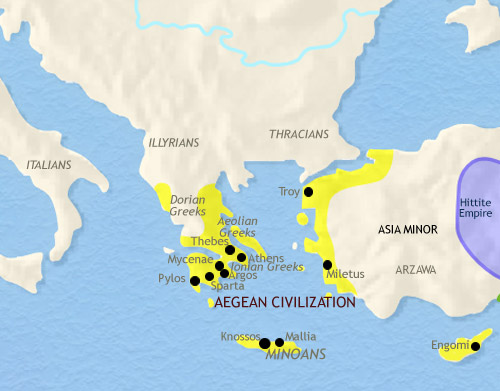by Moe | Oct 15, 2013 | Gods & Goddesses, History of the Brotherhood
“The Great Dragon was cast out, that Archaic Ophis, called Diabolos and Satan, that deceiveth the whole world.” – HP Blavatsky
Just this past week, Pope Francis had given a sermon in which he had reminded Catholics that the Devil is real and we are called to spiritual warfare. Here is an excerpt and video of this sermon;
There are some priests who, when they read this Gospel passage, this and others say: ‘But, Jesus healed a person with a mental illness’. They do not read this, no? It is true that at that time, they could confuse epilepsy with demonic possession; but it is also true that there was the devil! And we do not have the right to simplify the matter, as if to say: ‘All of these (people) were not possessed; they were mentally ill’. No! The presence of the devil is on the first page of the Bible, and the Bible ends as well with the presence of the devil, with the victory of God over the devil.
Do not confuse the truth. Jesus fights the devil: first criterion. Second criterion: he who is not with Jesus, is against Jesus. There are no attitudes in the middle. Third criterion: vigilance over our hearts because the devil is astute. He is never cast out forever. It will only be so on the last day.
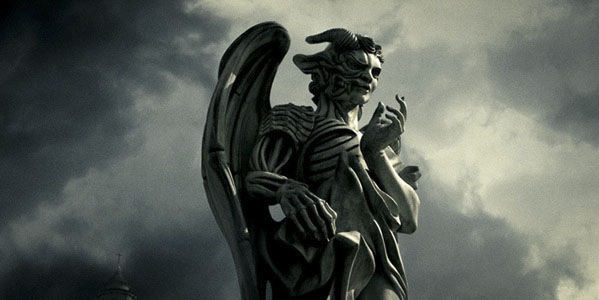 WHO IS THIS DEVIL AND ARE DEMONS REAL?
WHO IS THIS DEVIL AND ARE DEMONS REAL?
“Are they real, or are these papal claims just religious dogmas perpetuated in order to keep fear in the minds of the billion people who are members of the Catholic Church?”
The religious facts, are that the name of the devil has brought fear and mayhem into the minds of the people ever since it has been written and that this head prince of the demons had fallen when he turned his face away from God. To live, is to spell evil backwards and to be a devil, is to spell the word lived backwards. Hence, we live in a world that has been magically turned upside down, where there is a war for your soul here, and the never-ending spiritual warfare for our minds is a reality that many of us chained souls have come to know intimately.
To some people, the Devil is an invented character by the church, just like Jesus, who they say that his teachings were simply part of a secret Roman government plan that was hell-bent on subjugating the people they had conquered and their minds via religious dogmas. To other people who are more educated on these spiritual matters such as the early Church Fathers and some of the world’s best authorities on the occult, the devil and his legions of demons are as real as Jesus and the Pope.
In the Gospel of Luke, he explains who these demons are and who is their prince;
When Jesus had driven out a demon, some of the crowd said: “By the power of Beelzebul, the prince of demons, he drives out demons.” Others, to test him, asked him for a sign from heaven. But he knew their thoughts and said to them, “Every kingdom divided against itself will be laid waste and house will fall against house. And if Satan is divided against himself, how will his kingdom stand? For you say that it is by Beelzebul that I drive out demons. If I, then, drive out demons by Beelzebul, by whom do your own people drive them out? Therefore they will be your judges.
WHO WAS THE GREEK JEWISH DEMON BAALZEBUL THAT CATHOLICS CALL THE DEVIL OR SATAN?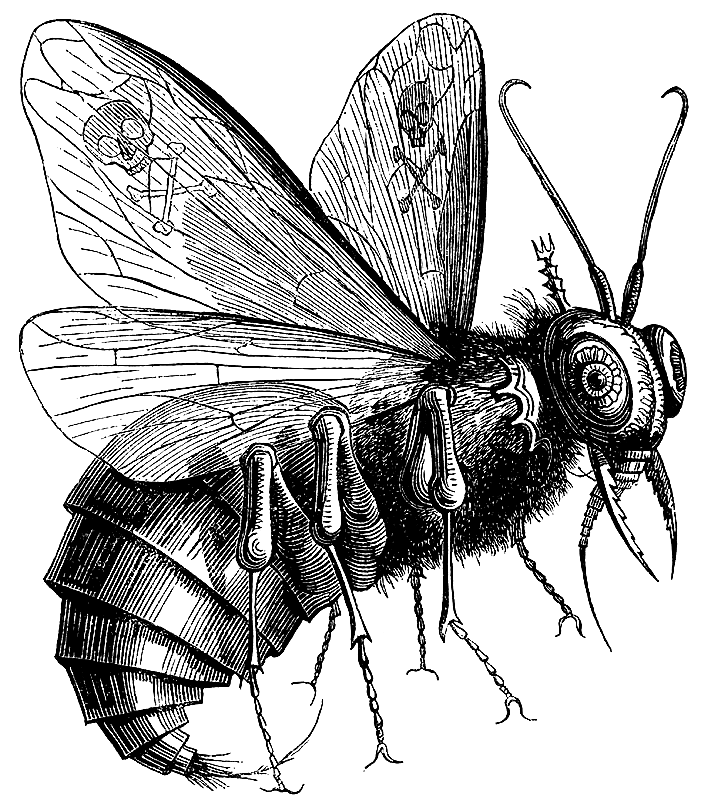
In the cult of Serapis, Beelzebul (Beelzeboul, Beelzebub, Beelsebab, Baalzebub or Ba’al) is prince of the Seraphim, just below Lucifer. The cult of Serapis had originated from the Greco-Egyptian priesthood under the Ptolemies. The testimony of Pausanias, says the temples of Serapis were the most famous at Alexandria, and the most ancient at Memphis. Tacitus, the Roman senator and historian had said that Serapis was worshipped as a type of universal deity that represented Jupiter, Osiris, Pluto, and sometimes Jupiter Ammon.
The name Beelzebul is a corruption of the Phoenician God ‘Ba’al’ (usually pronounced “bail”) and is mentioned in the Old Testament as the pagan idol of the Phoenicians, Ethiopians, Syrians and Greeks who had often worshiped Ba’al in conjunction with the fertility and war-goddess, Ashtaroth. The meaning of the term ‘Baal’, in both Gaelic and in Phoenician is – “the lord of heaven or lord of souls.” The plural of Baal is Baalim, or Baals (Judges 2:11, 10:10). Baalzebub or Beelzebul (bee-EL-ze-bull) is mentioned 2 Kings i, 2, and the name Beelzebul signifies the Lord of the Flies (which originally meant “Lord of everything that flies”), King of the Earth, and the Prince Daimon who is said to be the chief of spirits amongst the Jews.
Since only priests were allowed to utter his divine name, Hadad, Ba‛al was commonly used and few, if any Biblical uses of “Baʿal” refer to Hadad, the lord over the assembly of gods on the holy mount of Heaven. This is evident in the name Baal or Baalzebub becoming the corruption of Beelzebul, that is only found in the bible via the texts of the Acts of Pilate (also known as the Gospel of Nicodemus) and vary in whether they use Beelzebul or Beelzebub. The name is used by Hades as a secondary name for the Devil, but it may vary with each translation of the text; other versions give the name Beelzebub as Beelzebub, but separates him from the devil. The Gospel of Nicodemus is in two sections, with an appendix, Descensus ad Infernos—the Harrowing of Hell—that does not exist in the Greek texts, and is a later addition to the Latin versions. (Wikipedia)
In ancient Syria, the name, King Hadad was known as Adad, or Aden. The name Hadad is also spelled as Eldad, Bedad, Adad, Aden, Dudu, Dawd, Amnidad and Heldan. The meaning of Hadad is “on of Dod or David”, or Be-dad or Bon-dad, “the son of Dad,” and David, Daoud, or Dood means the beloved ; and as a mythical character the beloved one, the Lord’s anointed. The same is seen in the Kings of Edom, in Genesis in the names of ” Hadad,” Bedad ( = Bendad, son of Dod or David), Samlah, Shaul ( = Saul), and Benhanan. In the names Dod, Dad, Dan and David, we have a specific true meaning behind these other names. This true meaning would be “Father.” Hence, when we find these many different names written in literature, they are referring to one “Lord and Father.”
Many Bible scholars translate the name David as Beloved, but the Hebrew root  (dwd) that yields
(dwd) that yields  (dod), meaning beloved in general or uncle more specifically; King David’s most beloved son, Solomon. By the side of King Hadad, stood his son Ben-Hadad. In ancient Syrian, Hebrew and Arabic, Ben means son. It is the kings of Edom (Gen. xxxvi. 35) who were called “Hadad, the son of Bedad,” or Ben-[Ha]dad who are also known to us now as the Priests of Baal, serpents, dragons, wise ones, Giants, and the Nephilim who are the Sons of God that became the fallen ones.
(dod), meaning beloved in general or uncle more specifically; King David’s most beloved son, Solomon. By the side of King Hadad, stood his son Ben-Hadad. In ancient Syrian, Hebrew and Arabic, Ben means son. It is the kings of Edom (Gen. xxxvi. 35) who were called “Hadad, the son of Bedad,” or Ben-[Ha]dad who are also known to us now as the Priests of Baal, serpents, dragons, wise ones, Giants, and the Nephilim who are the Sons of God that became the fallen ones.
Lucifer is another word for the Greek word, Phosphorus (Greek Φωσφόρος Phōsphoros), a name meaning “Light-Bringer” and the Morning Star. Baal, along with Lucifer and Leviathan, were the first three angels to fall, and Baal tempts men with pride and is opposed by St. Francis of Assisi. (Wikipedia) St. Francis was the founder of the Cordeliers and Franciscans. He was also known as the Seraphic Father and Seraphic Saint because of a vision he saw on Mount Alverna where he witnessed a crucified seraph who perforated his feet, hands, and right side. In the New Testament, Baal is identified as the Devil, “prince of the demons” and in Catholic demonology, is one of the seven princes of Hell according to Catholic views on Hell.(Wikipedia)
ARE DEMONS, SERPENTS AND DRAGONS EVIL?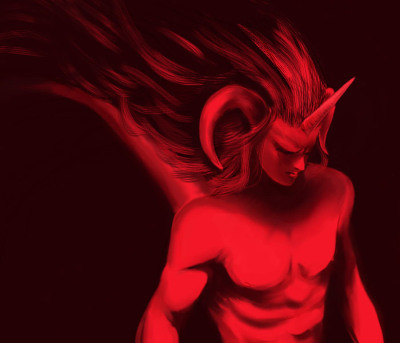
The Greek word daimon does not carry the negative connotation as it does today with Catholics and Christians. This is explained by 33rd Degree Freemason, Master Rosicrucian and author, Manly P. Hall who had written in “The Secret Teachings of all Ages,” that the Christian Church had literally taken these elemental entities or angels and grouped them together under the title of demon, and that for to the average mind the word demon means an evil thing.
The Christian Church gathered all the elemental entities together under the title of demon. This is a misnomer with far-reaching consequences, for to the average mind the word demon means an evil thing, and the Nature spirits are essentially no more malevolent than are the minerals, plants, and animals. Many of the early Church Fathers asserted that they had met and debated with the elementals.
The Serpent was venerated for thousands of years in ancient Egypt, Phoenicia, Ethiopia, Greece and many other places around the world as an emblem of divinity, an oracle, and as a god. The Greeks called Apollo also by the name of Python, which is rendered the same as Ophis, Opis, Oupis, and Oub. Ophis represents divine Wisdom (Blavatsky). Apollo and Ophis were the sons of Zeus who is the god of light and the sun, truth and prophecy, healing, plague, music, poetry, and more. This Serpent-worship or what the church would call devil worship, had continued amongst the Samaritans in the West and in Europe, and with the Druids in Ireland, Scotland and Britain. The Masters of Wisdom, and all Initiates into the Sacred Mysteries are called Nagas, or Serpents of Wisdom . These Gnostic Serpent Priests of Wisdom from the East had went under various names such as the Ophites, and the Hivites who later became known as the Levites; all these names signify serpent. The Ophites were said to attribute all wisdom to the serpent, who was also the author of knowledge to men.
The biblical legend of the serpent is derived from Greek legends where one of the first Titans, Ophis; meaning serpent, and who ruled over Olympus with his queen; Eurynome was dethroned by the God of chaos and darkness, Cronus (Saturn or Satan) and the goddess of fertility and war, Rhea (Saturn’s Moon). In Greek mythology, Olympus was the home of the Twelve Olympian gods of the ancient Greek world. It formed itself after the gods defeated the Titans in the Titan War, and soon the palace was inhabited by the gods.
To the Phoenicians, Ethiopians, Syrians and Greeks who are the Jews of the Old Testament, Baal was their chief daimon (daemon or demon) or simply, their God. Ba’al would be the equivalent to Jesus in the New Testament, but Ba’al is the race or ancestor God of who we call today the Jewish people of the Old Testament and Jesus would be the new chosen son or messiah, Augustus Caesar with his blood to commemorate as the cornerstone of the newly built Roman Empire, and who under Roman and Cannon Law via the new law of the New Testament would abolish all old gods and teachings of the Old Testament.
From this point forward, Ba’al becomes the devil, their angels become evil ugly demons, and the people called the Phoenicians, Ethiopians, Syrians and Greeks, along with their religion become Jews. This spiritual event at the turn of the millenia marks the great dividing point between the Old Law under the Greek Ptolemy’s of the Old Testament and the New Law under the Caesars and Rome. Hence, Rome against the world and old spirit world via Vatican magic of the pen and backed by the sword of the Roman Army.
As I mentioned above, Baal is prince of the Seraphim just below Lucifer. The name ‘seraphim’ is the plural form of serpent and is also said to mean, “the burning ones.” Seraphs appear in the 2nd century BC Book of Enoch, where they are designated as drakones (δράκονες “serpents”) and are mentioned in conjunction with cherubs as the heavenly creatures standing nearest to the throne of God. Serapis is the Hellenized version of the Egyptian Osiris-Apis. The various spellings of the name Serapis are Sor-apis (Σέραπις, Attic/Ionian Greek), Sarapis (Σάραπις, Dorian Greek), Serapin (Greek Ὄφις), or in Hebrew Seraph.
Please also note that the great dragon, devil or diabolos is a drakones (δράκονες “serpent”), and is a heavenly creature standing nearest to the throne of God. All these names mean ‘serpent’ which is the symbol of wisdom, knowledge and Gnosis. Hence, the battle against the serpent or the Great Dragon is the battle of the Roman Church against knowledge and Gnosis.
It is the Old Serpent of the Genesis. Since the church was opposed to the serpent who brought this Gnosis and knowledge to men to make them wise, they had symbolically crucified the prince of the Seraphim, Jesus at Golgotha, the place of the skull, in order for the church to take the place of wisdom and the serpent and in which they would become the vicars of Christ. Therefor, Baal becomes Satan or the Old Serpent under Roman Catholic Church Law via the New Testament. A church that was simply against the religion and angels or Daimons (Demons) of the Ancient Greek Jews who had committed the sins of propagating wisdom and Gnosis, and for good reason.
 But as Pope Francis says, “the devil is astute. He is never cast out forever. It will only be so on the last day.”
But as Pope Francis says, “the devil is astute. He is never cast out forever. It will only be so on the last day.”
Pope Francis and the Devil
“Vigilance, because his strategy is this: ‘You became Christian. Advance in your faith. I will leave you. I will leave you tranquil. But then when you are used to not being so watchful and you feel secure, I will come back’. The Gospel today begins with the devil being cast out and ends with the devil coming back! St. Peter would say: ‘It is like a fierce lion that circles us’. It is like that.”
‘But, Father, you are a little ancient. You are frightening us with these things’. No, not me! It is the Gospel! And these are not lies: it is the Word of the Lord! Let us ask the Lord for the grace to take these things seriously. He came to fight for our salvation. He won against the devil! Please, let us not do business with the devil! He seeks to return home, to take possession of us. Do not relativize; be vigilant! And always with Jesus!”
Moe is the founder of GnosticWarrior.com. He is a father, husband, author, martial arts black belt, and an expert in Gnosticism, the occult, and esotericism.
by Moe | Oct 13, 2013 | Gods & Goddesses, History of the Brotherhood, Uncategorized
The city of Knossos on the island of Crete, Greece has a deep history in helping create modern civilization, that many people 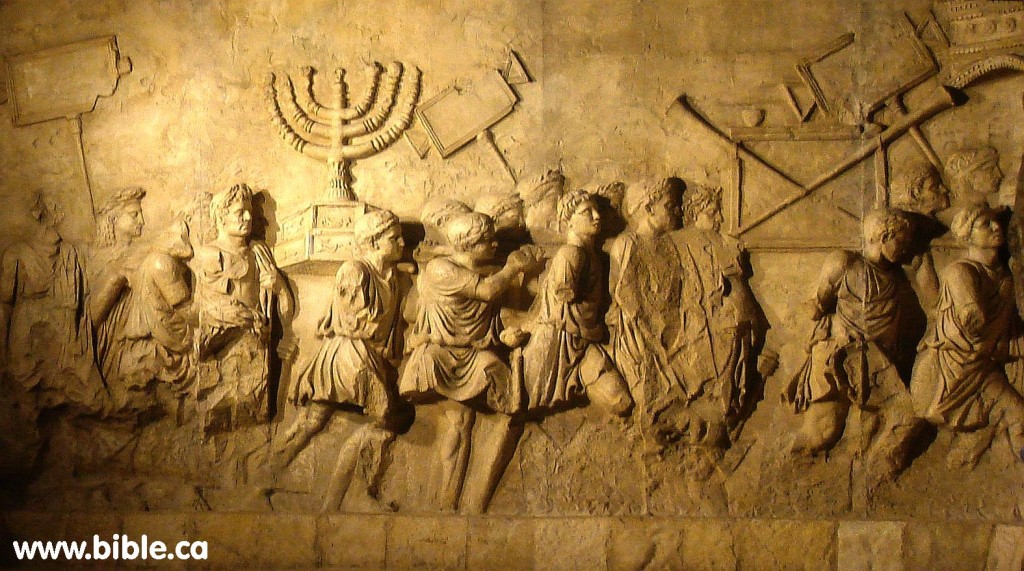 are unaware of. The history I speak of goes back to approximately 1600 B.C. and had flourished until approximately 70 A.D. This is the time when I believe, that their old culture and religion was destroyed in the great Judean rebellion and siege of Jerusalem by the new comers on the world scene and who happened to be their Italian cousins, the Romans.
are unaware of. The history I speak of goes back to approximately 1600 B.C. and had flourished until approximately 70 A.D. This is the time when I believe, that their old culture and religion was destroyed in the great Judean rebellion and siege of Jerusalem by the new comers on the world scene and who happened to be their Italian cousins, the Romans.
The destruction of the ancient Palace Temple (the Second Temple), the royal archives, and the entire city of Knossos had come at the orders of Roman Emperor, Nero who had sent Vespasian and his son Titus to Judea in order to subdue the Jewish nation in a massive invasion of the Holy Island of Crete in the year 67 A.D. Titus had served under his father on the island of Crete in the kingdom of Judaea (Greco-Egypt) during the First Jewish-Roman War. For winning this historic holy battle for the Romans, Titus would later become known as Saint Titus, Bishop of Crete and companion to the Apostle Paul.
The greatest of ancient Greek epic poets, Homer had written in his most famous works, the Iliad and the Odyssey, that the city of Knossos is mentioned along with Phaestos as having magnificent temples. But it is the city of Knossos that he clearly identifies as the most dominant city of a rich and populous land. Homer had called it, “Broad Knossos,” in which he tells us of the maze. In later times, archeologist, Sir Arthur Evans in the late 19th century would excavate the Temple at Knossos and change the name to the Minoans; he called the maze, the Labyrinth of the Minotaur Bull. Homer in the Odyssey sang: “One of the great islands of the world In midsea, in the wine-dark sea, is Crete, spacious and rich and populous.”(Hom. Od. XIX, 172ff). He also mentions, that rituals were held for the goddess Ilythyia in the cave of Amnisos.
Homer describes this period in history as an age that is called the “prehistoric period of Europe.” The Ages of the Old Law under the Old Testament before those of the Roman Catholic Church and the New Testament, in which the new law and religious customs of the 6th Age were born under the leadership of the first Roman Pope, Augustus Caesar. Hence, the law of Caesar. King Lucius, 2nd-century King of the Britons traditionally credited with introducing Christianity into Britain has said, “superior papal authority and dominion is derived from the law of the Caesars.”
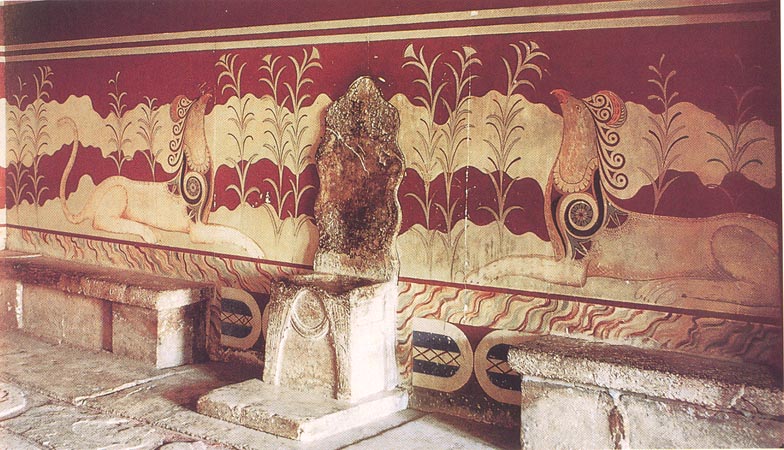 Both the Iliad and the Odyssey were highly venerated ancient books by the Greeks that became, what I believe are the historical blue prints that would help shape the writings of the bible. If you study this history that runs parallel to biblical history, you will discover that the city and palaces of Knossos on Crete appear to be the main administration centers for the Jews in the bible. This same location of the great palace of Knossos may actually be allegorically known in the bible as the “Second Temple of Solomon”; the city of Knossos would be known as the “City of David,”AKA the “City of Jerusalem” that was eventually destroyed by the Romans who were led by the Emperor Titus. This makes perfect reasonable sense, since both historical evidence and archeological science verifies the city of Knossos was the birthplace, to not only modern civilization, but it was also the home of many Cretan Kings, royal Jewish families and the first Fathers and Saints of the Catholic Church.
Both the Iliad and the Odyssey were highly venerated ancient books by the Greeks that became, what I believe are the historical blue prints that would help shape the writings of the bible. If you study this history that runs parallel to biblical history, you will discover that the city and palaces of Knossos on Crete appear to be the main administration centers for the Jews in the bible. This same location of the great palace of Knossos may actually be allegorically known in the bible as the “Second Temple of Solomon”; the city of Knossos would be known as the “City of David,”AKA the “City of Jerusalem” that was eventually destroyed by the Romans who were led by the Emperor Titus. This makes perfect reasonable sense, since both historical evidence and archeological science verifies the city of Knossos was the birthplace, to not only modern civilization, but it was also the home of many Cretan Kings, royal Jewish families and the first Fathers and Saints of the Catholic Church.
I have found connections that also tie ancient Crete to ancient Judea and the Judaeans. The Cretans were called back then, the ‘Idaeans’ and according to Homer, one of their rulers was known as ‘Idomensus,’ the grandson of the ruler of Knossos. Idomensus was said to have fought side by side with the Achaeans against the Trojans in the Trojan War. The children of Idomensus were, whom Homer had called the royal and warlike ‘Idomen,‘ and who we would know of today as the Judeans (Idaeans, Tribe of Judah).
They were named after the mountain on Crete called Mount Ida where their God Zeus was hidden in a cave by his mother, 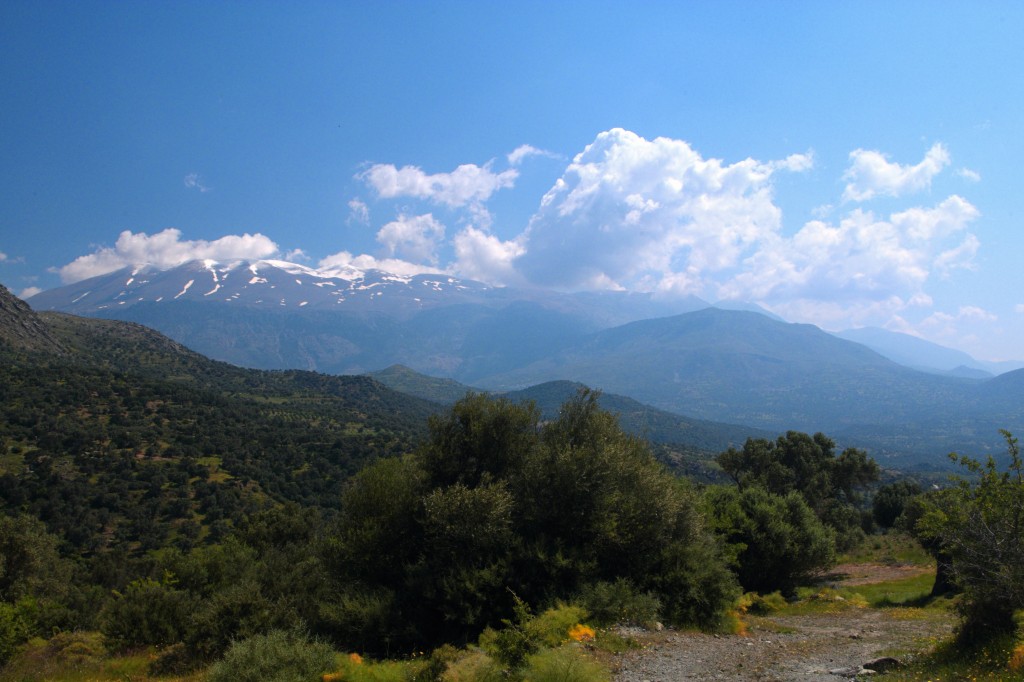 the Greek Titaness Rhea who then placed the infant Zeus in the care of the priesthood of the Curetes (Kuretes). These priests Strabo had written, were also known as the Corybantes, Dactyls, Cabiri, and Telchines which are names that are often used interchangeably with one another. This cave of Zeus sits just above the Plain of Nida on Mount Ida, to the southwest of Knossos. The mother of Zeus was also known in Latin as “Mater Idaea (Idaean Mother).” The name Mount Ida is where the Tribe of Judah had received their name, “the ‘Idaeans,” which is just an earlier spelling of the Judaeans. The reason for this spelling, is because at the time the letter ‘j’ was simply not used.
the Greek Titaness Rhea who then placed the infant Zeus in the care of the priesthood of the Curetes (Kuretes). These priests Strabo had written, were also known as the Corybantes, Dactyls, Cabiri, and Telchines which are names that are often used interchangeably with one another. This cave of Zeus sits just above the Plain of Nida on Mount Ida, to the southwest of Knossos. The mother of Zeus was also known in Latin as “Mater Idaea (Idaean Mother).” The name Mount Ida is where the Tribe of Judah had received their name, “the ‘Idaeans,” which is just an earlier spelling of the Judaeans. The reason for this spelling, is because at the time the letter ‘j’ was simply not used.
The Tribe of Judah is where we get the word Jew which is a derivative of the word Judah, referring to a descendant of the Kingdom of Judah, and a Jew was a word that the Romans had used in propaganda to apply to the followers of the old religions and pagan rites of their ancestors that had conflicted with the state approved Roman religion. The Biblical Judah (in Hebrew: Yehuda) is the original name of the Tribe of Judah, which is traditionally symbolized by a lion. (Wikipedia) In a previous article I had written, The First Jews of Crete, I had detailed some of my research into the Crete, Judaea and Jerusalem connections and where many of the world’s greatest historians call these people from Crete, the Idaeans.
Roman Senator and historian, Cornelius Tacitus (110 A.D.) had written that the Jews often traveled to Crete to celebrate the festival of Pentecost in Jerusalem and that they eventually were exiled from the island when Saturn was driven from his throne by the violence of Jupiter. The Cretans are called Idaeans, and then Judieans who eventually became fugitives from the island and who then settled on the nearest coast of Africa in the remotest corner of Libya. In, The Works of Tacitus, he explains the relationship with Crete, the Jewish people and the exodus from the island of Crete to the coast of Africa in Libya.
The Jews, we are told, escaping from the island of Crete, at the time when Saturn was driven from his throne by the violence of Jupiter, settled in the extreme parts of Libya. Their name is adduced as – a proof. Ida, it is alleged, is a well-known mountain in Crete: the neighboring Idaeans, by an addition to the name to adapt it to the language of barbarians, are ordinarily called Judieans. Some say that the population, overflowing throughout Egypt, in the reign of Isis, was relieved by emigration into the neighboring countries, under the conduct of Hierosolymus and Juda. Many state that they are the progeny of the Ethiopians) who were impelled by fear and detestation to change their abode in the reign of King Cepheus.
The Umbrian connection of Royal Republic of Rome to the Royal Jewish Families of Crete
The reason that I stated in the first paragraph that the Romans were cousins to the Greek Jews from Crete, is because for hundreds of years before the beginning of the Roman Republic Italy was populated by a group of these people. One of these tribes was known as the Umbrians (AKA – Ombrii, Gomerians, Cimmerians, Cymry, Kymry, Cumri, Cumbri, Cimbri, Humbri, and the Celtic people) who had settled in the Tuscany area of Italy, approximately 1,500-500 years before the building of Rome. The Umbrians who historians, Dionysius, Pliny, Florus, and others have written that they were the most ancient people of Italy. Pliny had said “the Greeks had called them the people of the thunderstorm because they “survived the deluge.” This would be the same tribe that had descended from the royal Jewish families of Crete.
Based on various key marriages of the Umbrians in Rome, some of these chosen Jewish families had sons who had risen to the highest honors in the Roman state. Some of whom would become Rome’s first emperors and who we can easily trace their ancestors to the island of Crete. One of these Italian Umbrians was named Nerva (Latin: Marcus Cocceius Nerva Caesar Augustus; 8 November, 30 AD – 27 January, 98 AD), who became the thirteenth Roman Emperor from 96 to 98. Emperor Nerva was born at Narnia, in Umbria, A.D. 27 according to Eutropius (8, 1), or A.D. 32 according to Dio Cassius (68, 4) and he had family who had come from Crete. Another highly venerated Roman Emperor with connection to the Umbrians and family ties to Crete, would happen to be the same man who would lead the destruction of Jerusalem and the Second Temple on Crete. His name I mentioned above, Roman Emperor Titus who would later become a Saint in the Church.
Here is an old image below of the church companions, Saint Paul and Saint Titus holding the Holy See of Crete in their hands, symbolizing their dual governorship of this region via the Holy Roman and Byzantine Empires.
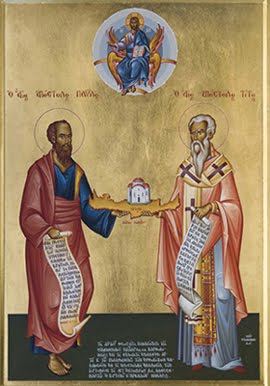
The grandmother of Titus was Vespasia Polla (also known as Vespasia Pollia, born c. 15 BC, fl 1st century AD) who was a descendant of the Cretans through the Umbrians of Italy. Like Emperor Nerva, she was also from the town of Narnia. Polla’s husband was named Titus Flavius Sabinus and he was a customs official and banker in the province of Asia, where he was honored with statues dedicated “To an Honest Tax-gatherer.” They were the mother and father of the Roman emperor Vespasian, and grandparents to the emperor Domitian. (Wikipedia)
These facts are just the beginning of the strong connections between early Rome and ancient Crete.
Polla’s eldest son was named, Titus Flavius T. f. T. n. Sabinus (AD 8–20 December 69 AD). He served as a legate under Aulus Plautius in Britain, along with his brother, Vespasian. He afterwards governed Moesia for seven years. Her youngest son, Vespasian had served as tribunus militum in Thrace, and was quaestor in Crete and Cyrene. A quaestor was a type of public official in the “cursus honorum” system who supervised the financial affairs of the state and conducted audits. In other words, he collected tribute in the form of taxes from his cousins for the Roman Empire. (Wikipedia)
In addition to these Jewish ties, the grandson of Vespasia Polla, Saint Titus had also had a controversial relationship with the Jewish queen Berenice. Berenice was a member of the Herodian Dynasty that ruled the Roman province of Judaea from the island of Crete between 39 BC and 92 AD. As I mentioned above, Crete was part of Judaea, and based on archaeological evidence and many historians, it was also home to the main city or cities that had governed this entire region with their Navy. Berenice was the daughter of King Herod Agrippa I and a sister of King Herod Agrippa II.
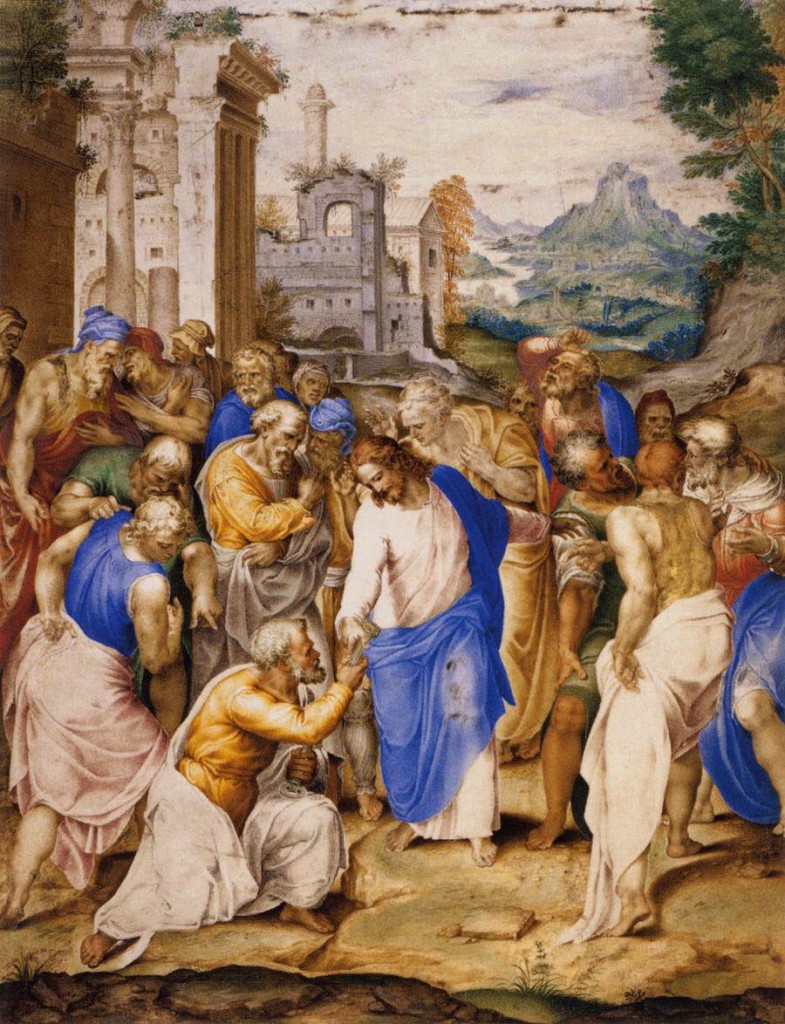 Berenice was also a client ruler of the parts of the Roman Empire, which is said to be modern-day Syria. The family court of Berenice was at Caesarea in Cappadocia and the city was named in honor of Augustus Caesar. Cappadocia is Latin for Crete, and most history surrounding the city of Augustus, Caesarea will often state that this city is in the province of Cappadocia. Caesarea is the precise location or near where it is written Saint Longinus, the Roman soldier pierced Jesus Christ in his side with a lance, the “Holy Lance.” Saint Longinus was said to have been baptized by the apostles of Crete, where he then became a monk who had converted many people to Christianity on the island, and he was eventually martyred under Octavius Augustus Caesar.
Berenice was also a client ruler of the parts of the Roman Empire, which is said to be modern-day Syria. The family court of Berenice was at Caesarea in Cappadocia and the city was named in honor of Augustus Caesar. Cappadocia is Latin for Crete, and most history surrounding the city of Augustus, Caesarea will often state that this city is in the province of Cappadocia. Caesarea is the precise location or near where it is written Saint Longinus, the Roman soldier pierced Jesus Christ in his side with a lance, the “Holy Lance.” Saint Longinus was said to have been baptized by the apostles of Crete, where he then became a monk who had converted many people to Christianity on the island, and he was eventually martyred under Octavius Augustus Caesar.
According to the Acts of the Apostles, Caesarea was first introduced to Christianity when Peter the apostle baptized Cornelius the Centurion, his household, and his soldiers. (Wikipedia) It is also the birthplace of Saint Basil the Elder and the grandmother of Saint Basil the Great, Saint Macrina the Elder and St. Basil the Great, Bishop of Caesarea and Doctor of the Church was born and served the church in Crete.
Caesarea from this point forward was the seat of the Roman prefect and “administrative capital” of the region beginning in 6 A.D. In the Acts of the Apostles, records that during this time, in 60, Paul of Tarsus appeared before this family court at Caesarea. (Wikipedia) Paul or Saul of Tarsus in no other than Paul the Apostle or Saint Paul who had lived on the beautiful island of Crete for two years. Paul is considered one of the most important apostles of our age and he had also founded several churches in Asia Minor and Europe.
My research shows that the main battle in this war was fought on and/or surrounding this very island. It was after the destruction of the Second Temple and Palaces in 70 A.D., that some of the Jewish Cretan kings and families of ancient Greece would become tributaries to Rome where they would still maintain part of their royal status, but more along the lines of Dukes and Templars from this point forward. With this new structure of government, this city and their plan had rose again into a much greater power than before and that still lasts to this very day.
After all, at the time, there was not one place in the world that had so many Greek Jews and royal Jewish families, as there was on this island of Crete. The 1st century Jewish-Roman Historian, Flavius Josephus had married a woman from a royal family on Crete who became his 4th wife and bore him two sons. Roman Emperor Titus would Siege Jerusalem and then destroy the Second Temple in Crete in the First Jewish-Roman War. For winning this war, from this point forward, he would become St. Titus the Apostle, an early Christian leader, and a companion of Saint Paul.
Therefor, it only makes perfect sense to reason that this island of Crete which is named after the Greek word for creation, Kri-ti is the birthplace to the first Gnostic Cities that gave the world many new inventions. This island would also be the stronghold of the ancient Jews who would at one time be formidable foes to Rome and then later would join them as allies under the banner of Christianity via the Universal Church, that we know today as the Catholic Church of the both the Roman and Byzantine Empires (Greece and Russia) with the Orthodox Church under the symbol of the Double Headed Eagle.
“The Lion of the Tribe of Judah has conquered.”
SOURCES:
All information is linked to in yellow and or is open source information from non-copyrighted material that can be easily verified via the internet search engines with some work and a lot of Gnosis.
Moe is the founder of GnosticWarrior.com. He is a father, husband, author, martial arts black belt, and an expert in Gnosticism, the occult, and esotericism.
 WHO IS THIS DEVIL AND ARE DEMONS REAL?
WHO IS THIS DEVIL AND ARE DEMONS REAL?
(dwd) that yields
(dod), meaning beloved in general or uncle more specifically; King David’s most beloved son, Solomon. By the side of King Hadad, stood his son Ben-Hadad. In ancient Syrian, Hebrew and Arabic, Ben means son. It is the kings of Edom (Gen. xxxvi. 35) who were called “Hadad, the son of Bedad,” or Ben-[Ha]dad who are also known to us now as the Priests of Baal, serpents, dragons, wise ones, Giants, and the Nephilim who are the Sons of God that became the fallen ones.

 But as Pope Francis says, “the devil is astute. He is never cast out forever. It will only be so on the last day.”
But as Pope Francis says, “the devil is astute. He is never cast out forever. It will only be so on the last day.”







